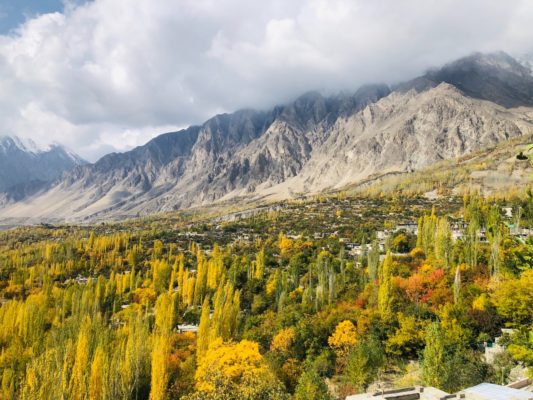As Antarctica’s mass loss increases, the threat of crossing tipping points both in the ice sheet and the surrounding Southern Ocean is increasing. But what actually is a tipping point? Have tipping points already been crossed in the past? And what might the future hold? What do we mean by a “tipping point”? Scientifically speaking, a tipping point is generally understood to be a threshold that, on ...[Read More]
Running a live stream of proglacial processes
In Switzerland, nothing is really remote, but some places are more so than others. Dense infrastructure networks typically provide convenient access to research sites in the Alps where it is difficult to feel far away from home. However, this is not always the case… For us, our home for the summer is a bit different. We work at 2400 m above sea level in Southern Switzerland, in a narrow vall ...[Read More]
The physical and social changes facing the mountainous populations of the Karakoram Range
As a child, Shakir remembers long extreme winters with heavy snowfall and dry blistering winds, where it was hard to play outside. He grew up in a village named Gulmit, located at an elevation of 2500 m, surrounded by the high snow caped mountains in the Karakoram Range in northern Pakistan. That was 30 years ago, when climate change was still not a cause of concern for the local people. Today, in ...[Read More]
Did you know…about regenerated glaciers?

Ice caps, valley glaciers, cirque glaciers, piedmont glaciers, ice sheets… I’m guessing that if you are a glaciology enthusiast, you have already heard about these types of glaciers. But you probably don’t know anything about regenerated glaciers, am I right? Well, you are in the right place! Let’s find out more about this little-known glacier type. Classifying glaciers Glaciers are classified on ...[Read More]
Climate Change & Cryosphere – A brief history of A68, the world’s largest iceberg
In July 2017, the world’s largest iceberg known as A68 calved from the Larsen C Ice Shelf, located in the western Weddell Sea, Antarctica. Since then, A68 has lost two chunks of ice, A68-B and A68-C, but still remains a giant after more than 3 years. How did it feel to be the greatest, A68? Being the greatest With a length of 175 km and being about 50 km wide, this giant iceberg also appropriately ...[Read More]
Image of the Week – What darkens snow and ice?
“Be thou as chaste as ice, as pure as snow”. Hamlet, Act 3 Scene 1 (W. Shakespeare) Snow and ice are not always as pristine as one may think. If you have ever walked on a glacier or on a snowfield during summer, you might have already noticed that. In fact, both snow and ice are often darkened by impurities. In this blog post, you will learn about the main processes leading to ice and snow darkeni ...[Read More]
Climatic drivers of permafrost mounds in North American peatlands

Permafrost, or perennially frozen, peatlands are among the world’s largest terrestrial carbon stores and are particularly threatened by warming climates. Understanding how modern climate controls the distribution of permafrost peatlands is crucial for making confident predictions of their past and future extents. What are permafrost peatlands? Peatlands are wetlands that develop where cold, wet co ...[Read More]
Climate Change & Cryosphere – How the Chalaati Glacier (Georgian Caucasus) changed since the Little Ice Age
Chalaati Glacier is one of the largest glaciers in the Greater Caucasus and has undergone expansive mass loss. In this week’s blog post, Levan Tielidze tells us about Chalaati Glacier variations in the past centuries. His recent study was conducted based on surface exposure dating technique, dendrochronology (tree ring analysis), lichenometry, and satellite imagery. They found out that the Chalaat ...[Read More]
Climate Change & Cryosphere – Glacier retreat poses new challenges in the Central Andes
When you hear of Chilean glaciers, you probably think about the large glaciers of Patagonia. However, glaciers can be found further north in Chile as well (see this previous post). While the melting of the Patagonian glaciers mainly affects the global human population by contributing to sea level rise, the retreat of glaciers in central Chile affects the local human population directly in terms of ...[Read More]
Exploring the hidden plumbing of glaciers with Cryoegg
Plumbing is something we take for granted: the pipes that bring us water to wash and drink, and the pipes that take the waste water away again. We see the taps and basins in our kitchen and bathroom – but the pipes are hidden away under the floor or inside the walls – and we mostly ignore them until there’s a leak or a blockage! It turns out that glaciers have plumbing too – and ...[Read More]



